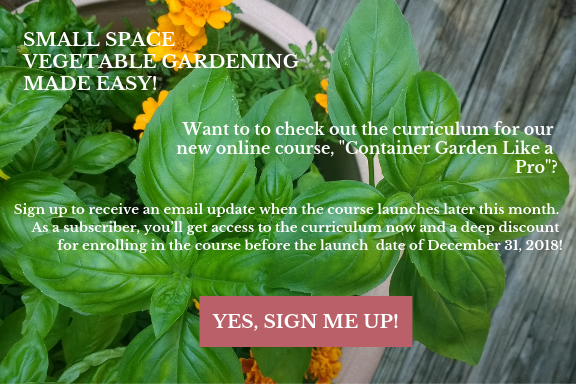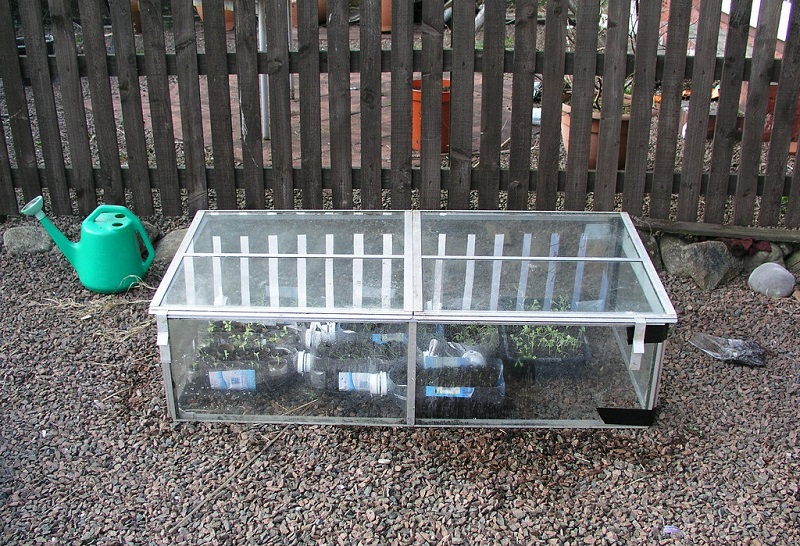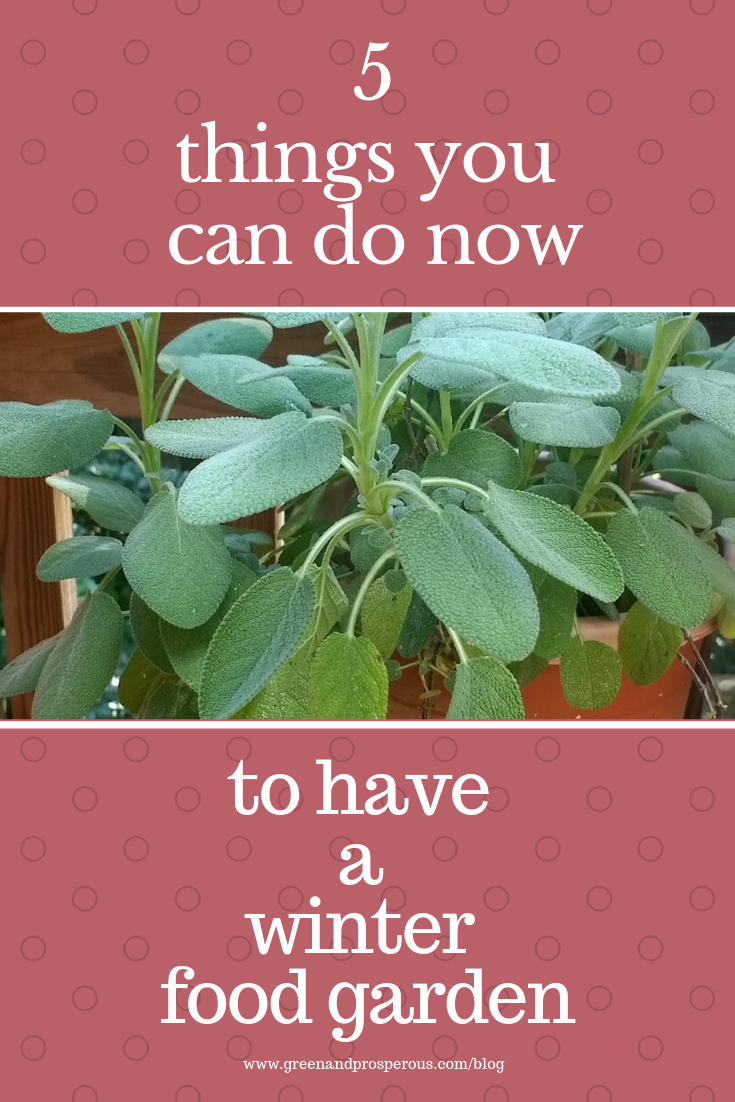5 Things you can do now to have a winter food garden
/Most people who garden believe that the growing season ends when the weather begins to turn cold and morning dew turns to frost. This is absolutely not true, though. A few places (USDA zones 0-2) have extremely short growing seasons that make it very difficult to grow vegetables outdoors without using specialized techniques and growing plants that are uniquely adapted to that climate. However most people, even those who live in places where it reliably snows every winter (like Ontario, Canada), can continue to grow fresh herbs, vegetables, and even some flowers all year round.
For years, I listened to people who told me that it was impossible to grow vegetables in the winter without a greenhouse (some of them garden nursery employees!) For years, I convinced myself that this must be true. Then one day, in the course of doing research for a blog post, I came across a video of an Amish farmer pulling fully-formed carrots out of the snow-covered ground and was hooked on the idea of winter gardening. (I haven’t been able to find that video again but here’s a video by Urban Farming that shows Curtis Stone harvesting winter carrots.) My first attempt at winter gardening was not very successful, since I neglected to protect my plants adequately from an overnight frost that came quickly and unexpectedly, but after that trial-and-error period, I found that winter gardening was not only enjoyable and rewarding, it was a lot easier than I thought it would be!
If you have an interest in gardening even in the cold months, if you miss tending plants in the dead of winter, and if you are even just a little curious about how you could grow some of your own food outdoors all year round, then consider these 5 things you can do now to have a winter food garden.
Warm up the soil in your garden
Prepping your in-ground soil is not always fun, and trying to prep a large area that consists of poor-quality, rocky soil can be back-breaking work. I always recommend starting with a small, manageable plot of land and working as much soil over the course of a few weeks as you are willing and able to do. It doesn’t take much space to grow a few Swiss Chard, kale, bok choy, or spinach plants, and carrots, onions, and potatos don’t need much room to grow underground, either.
In the cold season, you can warm up the soil for planting in a few different ways: first, you can use black plastic to cover the ground and make it around 3⁰ C/ 37⁰ F warmer. If you add a layer of 10cm/4 in. peatmosss mulch on top of the plastic, you can warm the soil up by an additional 3⁰ C/ 37⁰ F. You can also use clear plastic, row covers, or garden fleece to achieve the same effect. Using a raised garden bed or growing in a black container can warm soil temperatures up to 5⁰ C/41⁰F.
Invest in or make DIY season extenders
Another method to keep your garden growing all winter is to use floating row covers over your soil. Keep in mind, this method is effective if your soil is not already frozen. Sow seeds in the soil and place the row covers over them, anchoring them down with garden staples (or rocks). You can also use plastic sheeting (cut a slit in the sheet and sow seeds in them), cloches (a hard or semi-hard plastic covering that fits right over your plant), or cold frames (a wooden enclosure topped with a window to let in sunlight and preserve heat) to protect your outdoor plants from a hard chill or frost.
Some of the more efficient ways to protect your plants all winter long, even in the snow, involve the use of a hot box or a greenhouse. A hot box is basically a sloped box topped with a window. It looks like a tall cold frame. The difference is, it is self-contained and has a bottom (mine has casters on it so I can easily move it around my deck). The plants stay warm inside because of the layers of soil, straw, or other substrates you use for planting. Mine is lined with plastic to keep out the chill, then I add a bed of straw to line the bottom of the hot box, then a layer of mushroom-based compost, soil, and another layer of compost on top. Horse manure works best for keeping things warm in there, but it has to be hand-gathered (no thank you!) and cured with straw for a week, and it can easily burn the roots of your tender shoots if you’re not careful.
Finally, you can get a greenhouse. Unfortunately, this is not cost-effective for many people who just want to grow a few things, but fortunately, there are many options out there! Mini-greenhouses are affordable, effective, and allows you to grow a few plants in your yard or on your porch or deck. I just put my brand-new mini-greenhouse together last night and will be telling you all about the results I achieve this winter.
Grow indoors from food scraps
If you’re a gardener or garden-lover on Pinterest (as we are!) you’ll no doubt have come across many pins about how you can re-grow vegetables indoors from food scraps. I have tried it myself and found that it’s absolutely true! It’s pretty easy to re-grow lettuce, bok choy, and cabbage from scraps. But these are just a few of the vegetables you can grow from kitchen scraps you’d normally throw away. Check out this infographic by Food Revolution to see a list of 19 vegetables you can re-grow with little effort, along with a breakdown of how to do it. The key to re-growing most of these is changing the water frequently; otherwise you’ll end up with rotting scraps.
Invest in a good grow light
One of the biggest mistakes that newbie gardeners who try to grow food plants indoors is not using an adequate grow light. You can buy pretty basic grow lights from your local nursery or home improvement warehouse, but a much more efficient method is to use one of 4 types of lights: HPS lights (high pressure sodium lights, sometimes called HID, high intensity discharge), Metal Halide lights (also sometimes called HID), fluorescent lights, and LEDs (light emitting diodes). There are advantages and disadvantages to using these different types of lights, which is explained in detail in this blog post by Urban Vine. A great explanation of metal halide lights is here, on the Epic Gardening blog.
Whichever light you choose, make sure you don’t hang it so high that your seedlings grow too tall, or so low that it burns your plants.
Bring your container crops indoors
Finally, you can bring some of your container crops indoors for the winter. I’ve done this with varying degrees of success for warm- or hot-weather vegetables (I’ve never been able to preserve my tomato plants indoors but did have success with small sweet peppers, curry leaf plants, lettuce, Swiss Chard, mint, oregano, and a few others. Plants like carrots and radishes also do well when moved indoors, as they can tolerate the low light and cooler temperatures more easily. If you do transfer your outdoor vegetables indoors for the winter, acclimate them to the indoor temperatures first by leaving them outside during the day and bringing them in at night for a few days before transferring them inside for the rest of the season. Be sure to spray them for pests with an insecticidal soap and keep them separate from houseplants to avoid transferring aphids and scale insects to them. Using an LED light will also help them thrive inside during the cold season, as sunlight filtered through a window is usually not enough for most vegetable plants that are used to being outside.
Want to find out more about winter gardening? Sign up for our mailing list to receive access to our Free Resources library and an update when we’ve added the curriculum for our winter gardening course. In the meantime, please check out our new online course in development, Container Garden Like a Pro. If you enroll before the end of December, you’ll get half off the enrollment price!
Like this? Please pin!









































